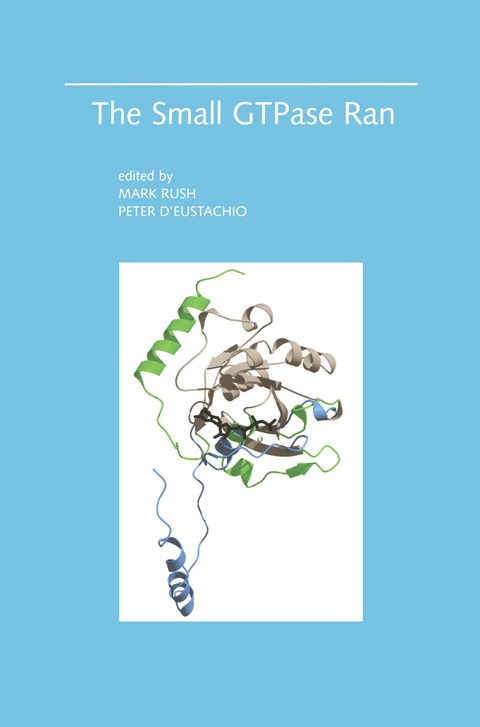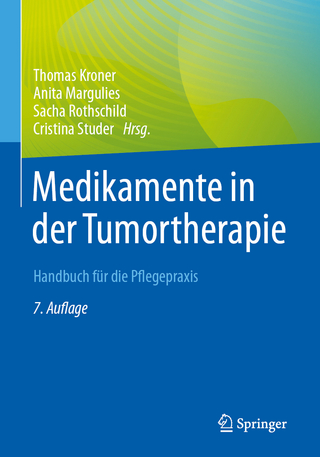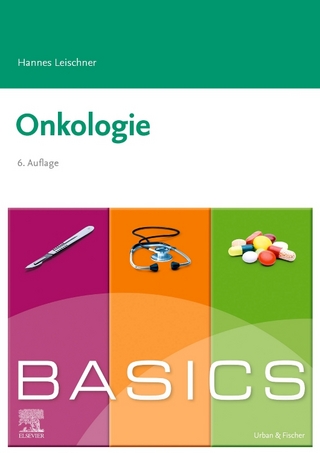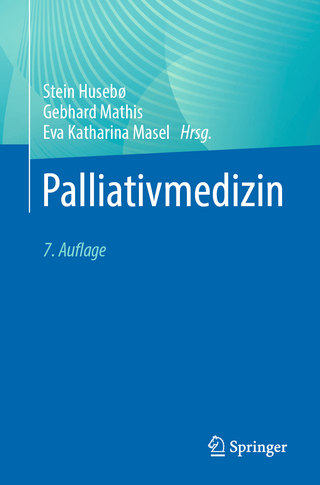
The Small GTPase Ran
Springer (Verlag)
978-0-7923-7510-4 (ISBN)
RAN: AN ATYPICAL GTPASE Mark G. Rush and Peter D'Eustachio New York University School o/Medicine. Department,o/Biochemistry New York NY 10016 ABSTRACT GTPases, proteins that bind and hydrolyze GTP (guanosine triphos- phate) are critical regulators of many metabolic pathways. Although these proteins are enzymes that catalyze the hydrolysis of GTP to GDP + Pi, their primary function is not the hydrolysis of GTP per se, but rather the coupling of this hydrolysis to metabolic regulation. Such coupling is gen- erally achieved through the interaction of the GTP-bound form of the GTPase with proteins known as *effectors. Effectors are often enzymes whose activities are modulated by the GTPase. However, effectors can also be structural proteins involved in assembling intracellular macromo- lecular complexes, such as actin filaments and microtubules, as well as proteins involved in the intracellular transport of proteins and RNAs. In- deed, the subject of this anthology, the small GTPase Ran, may exert most or all of its regulatory functions by interacting with non-enzyme effectors.
This property of Ran distinguishes it from other well studied GTPases, and has resulted in the elucidation of novel mechanisms of Ran action that are quite distinct from previously established paradigms of GTPase function. 1. INTRODUCTION The Ras-related nuclear protein Ran is a highly conserved (80% identity among yeasts and humans) member of the Ras superfamily of small GTP binding and hydrolyzing proteins.
1. The Role of Ran in Nuclear Import.- 1. Introduction.- 2. The Ran GTPase cycle and how it relates to nuclear protein import.- 3. Concluding remarks.- 4. References.- 2. Ran GTPase Regulation of the CRMl-Dependent Export Pathway.- 1. Introduction.- 2. Nuclear export signals.- 3. Identification of CRMl/exportin 1, the receptor for leucine-rich NES.- 4. Assembly of nuclear export complexes.- 5. Docking and translocation of the export complex through the NPC.- 6. Release of the export complex from the NPC.- 7. Concluding remarks.- 8. References.- 3. Role of Ran GTPase in RNA Processing and Export of RNA from the Nucleus to the Cytosol: Insights from Budding Yeast.- 1. Introduction.- 2. Ran pathway and tRNA biogenesis in S. cerevisiae.- 3. Ran and its role in ribosome biogenesis and nuclear export of ribosomes in S. cerevisiae.- 4. Ran and its role in nuclear export of mRNAs in S. cerevisiae.- 5. Concluding remarks.- 6. Acknowledgements.- 7. References.- 4. Direct and Indirect Roles of Ran·GTP in Nuclear Export of RNAs in Higher Eukaryotes.- 1. Introduction.- 2. Export of tRNA.- 3. Export of pre-snRNAs.- 4. Export of mRNAs.- 5. Export of ribosomal RNAs.- 6. Concluding remarks.- 7. Acknowledgements.- 8. References.- 5. The Role of Ran in Regulating Microtubule Spindle Assembly.- 1. Introduction.- 2. Studies that implicated Ran in the regulation of the microtubule cytoskeleton.- 3. Ran-GTP can stimulate microtubule spindle assembly in vitro.- 4. Generation of Ran-GTP by chromatin-bound RCC1 is required for spindle assembly.- 5. The molecular mechanism by which Ran regulates spindle assembly.- 6. Which spindle-forming processes does Ran regulate?.- 7. A model for how Ran-GTP regulates microtubule spindle assembly.- 8. Does Ran play a role in spindle assembly in vivo?.- 9.Could Ran-GTP have functions other than regulating spindle formation in mitosis?.- 10. Concluding remarks.- 11. Acknowledgements.- 12. References.- 6. Multiple Roles of the Ran GTPase During the Cell Cycle.- 1. Introduction.- 2. Expression of Ran pathway components in development and the cell cycle.- 3. Post-translational regulation of the Ran pathway.- 4. Ran’s role in regulation of the onset and completion of mitosis.- 5. Ran and mitotic spindle assembly.- 6. Ran and post-mitotic nuclear assembly.- 7. Concluding remarks, future directions.- 8. Acknowledgements.- 9. References.- 7. The Multiple Roles of Ran in the Fission Yeast Schizosac-charomyces pombe.- 1. Introduction.- 2. Introduction to the fission yeast S. pombe.- 3. Discovery of S. pombe Ran components.- 4. Localization of S. pombe Ran components.- 5. Phenotypic consequences of perturbing the Ran system.- 6. Evidence that the Ran system has multiple functions in fission yeast.- 7. Comparison of the phenotypic consequences of perturbing the Ran system in S. pombe and other experimental systems.- 8. Concluding remarks: Unanswered questions and future directions regarding the role of Ran in S. pombe.- 9. Acknowledgements.- 10. References.- 8. Mitotic Control by Ran and RanBPl in Mammalian Cells.- 1. Introduction.- 2. Mammalian RanBPl protein: structure and functions.- 3. Localization of components of the Ran network during the cell cycle.- 4.Spindle assembly in mammalian cells.- 5. Mitotic division.- 6. Nuclear reconstitution at mitotic exit.- 7. Concluding remarks.- 8. References.- 9. Ran Regulation by Ran GEF and Ran GAP.- 1. Introduction.- 2. Ran GEF stimulates guanine nucleotide exchange, and the resulting active Ran-GTP terminates import into the nucleus.- 3. In the cytoplasm, RanGAP induces Ran GTPaseactivity….- 4.…with some help from RanBP2 and RanBPl.- 5. Mogl induces release of GTP from Ran.- 6. Concluding remarks.- 7. References.- 10. Structural Views of the Ran GTPase Cycle.- 1. Introduction.- 2. Ran·GTP and Ran-GDP, active and inactive conformations.- 3. NTF2, a binding partner of Ran·GDP.- 4. Activation: RCC1 and its complex with Ran.- 5. Deactivation: Ran·GAP.- 6. Effectors of Ran.- 9. References.- 7. Concluding remarks.- 8. Acknowledgments.
| Erscheint lt. Verlag | 30.9.2001 |
|---|---|
| Zusatzinfo | XXIII, 214 p. |
| Verlagsort | Dordrecht |
| Sprache | englisch |
| Maße | 155 x 235 mm |
| Themenwelt | Medizin / Pharmazie ► Medizinische Fachgebiete ► Onkologie |
| Naturwissenschaften ► Biologie ► Biochemie | |
| Naturwissenschaften ► Biologie ► Zoologie | |
| ISBN-10 | 0-7923-7510-6 / 0792375106 |
| ISBN-13 | 978-0-7923-7510-4 / 9780792375104 |
| Zustand | Neuware |
| Haben Sie eine Frage zum Produkt? |
aus dem Bereich


